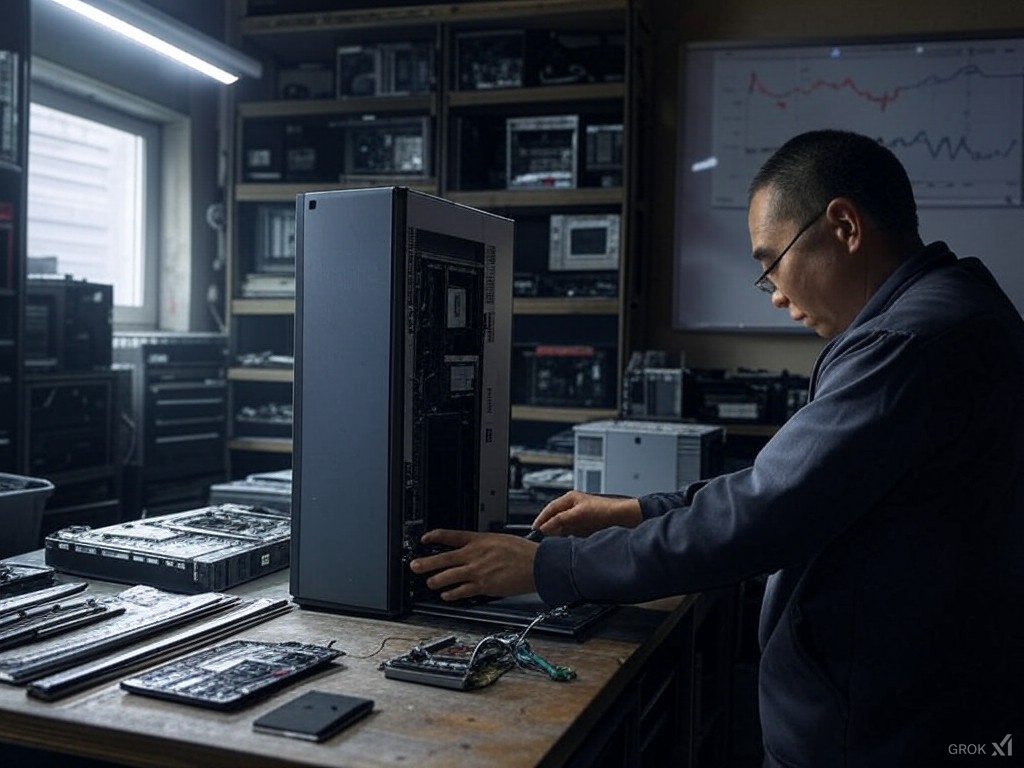In recent times, global trade dynamics have shifted significantly, with one of the most impactful changes being the imposition of tariffs on goods from China. For businesses like Shortcircuited Robotics, which specializes in computer repairs, these tariffs have direct implications on operational costs and pricing strategies. This post will delve into how these tariffs could potentially increase the costs associated with repairing computers that require parts sourced from China.

Understanding the Tariffs
The U.S. government has levied additional tariffs on various Chinese imports, including electronic components. These tariffs essentially act as a tax on imports, making goods from China more expensive for American businesses to purchase. The rationale behind these tariffs often includes protecting domestic industries, reducing trade deficits, or responding to perceived unfair trade practices.
Direct Impact on Shortcircuited Robotics
Increased Cost of Parts: For Shortcircuited Robotics, many of the essential components like motherboards, memory modules, and other critical hardware are often imported from China due to cost-effectiveness and availability. With tariffs, the price of these parts will increase. For instance, a part that previously cost $10 might now cost $12 or more, depending on the tariff rate.
Supply Chain Adjustments: The company might need to scout for alternative suppliers outside of China, which could lead to higher sourcing costs or lower quality parts unless equivalent or better alternatives are found. This adjustment period could also mean delays in service due to the time needed to establish new supply chains.

Pricing Implications
Service Pricing: To maintain profitability, Shortcircuited Robotics will likely need to adjust its pricing for repair services. Customers should expect an increase in repair costs, especially for computers that require frequently tariffed components.
Customer Communication: Transparency with customers about why prices are going up is crucial. Explaining that these increases are due to external economic policies rather than internal profit motives can help maintain customer trust.
Long-Term Strategies
Diversification of Supplier Base: To mitigate the effects of tariffs, Shortcircuited Robotics might accelerate plans to diversify its supplier base, looking towards countries like Vietnam, Taiwan, or even domestic manufacturers where feasible.
Innovation and Efficiency: Investing in technology or processes that either reduce dependency on imported parts or enhance repair efficiency could help manage costs. This might include more repairs at the component level or developing proprietary technologies.
Conclusion
The tariffs on Chinese goods have undoubtedly put pressure on businesses like Shortcircuited Robotics. While the immediate response might be to raise prices, the broader strategy involves adapting to a new economic landscape through diversification, efficiency improvements, and strategic advocacy. As these changes unfold, both the company and its customers will need to navigate through this period of adjustment, hopefully leading to a more resilient and adaptable business model.
Stay tuned for updates on how Shortcircuited Robotics is managing these challenges, and feel free to reach out if you have questions about your next computer repair!
Contact Us:
Please contact us here.
We Accept Donations
Send your crypto donations to Maxiaxxx.sol. All funds help towards moving our site to becoming decentralized





